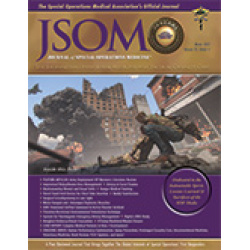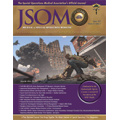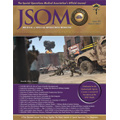Experience With Trauma-Induced ARDS: A Retrospective Study of US Wartime Casualties 2003-2015
Nam JJ, McCravy MS, Haines KL, Thomas SB, Aden JK, Johnston LR, Mason PE, Gurney J, Sams VG 22(4). 111 - 116 (Journal Article)
Background: The purpose of our study was to assess risks/ outcomes of acute respiratory distress syndrome (ARDS) in US combat casualties. We hypothesized that combat trauma patients with ARDS would have worse outcomes based on mechanism of injury (MOI) and labs/vital signs aberrancies. Materials and Methods: We reviewed data on military Servicemembers serving in Iraq and Afghanistan from 1 January 2003 to 31 December 2015 diagnosed with ARDS by ICD-9 code. We extracted patient demographics, injury specifics, and mortality from the Department of Defense Trauma Registry (DoDTR). Results: The most common MOI was an explosion, accounting for 67.6% of all injuries. Nonsurvivors were more likely to have explosion-related injuries, have higher injury severity score (ISS), higher international normalized ratio (INR), lower platelet count, greater base deficit, lower temperature, lower Glasgow Coma Scale (GCS) score, and lower pH. There was no significant difference in deaths across time. Conclusion: By identifying characteristics of patients with higher mortality in trauma ARDS, we can develop treatment guidelines to improve outcomes. Given the high mortality associated with trauma ARDS and relative paucity of clinical data available, we need to improve battlefield data capture to better guide practice and ultimately improve care. The management of ARDS will be increasingly relevant in prolonged casualty care (PCC; formerly prolonged field care) on the modern battlefield.


 Español
Español 





